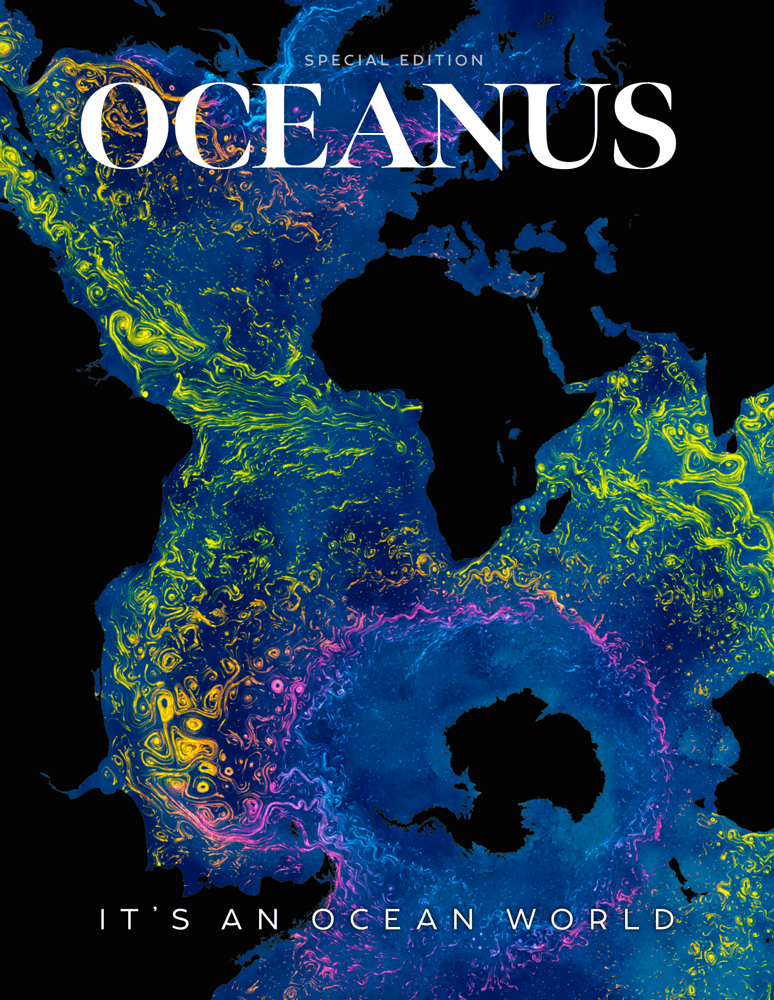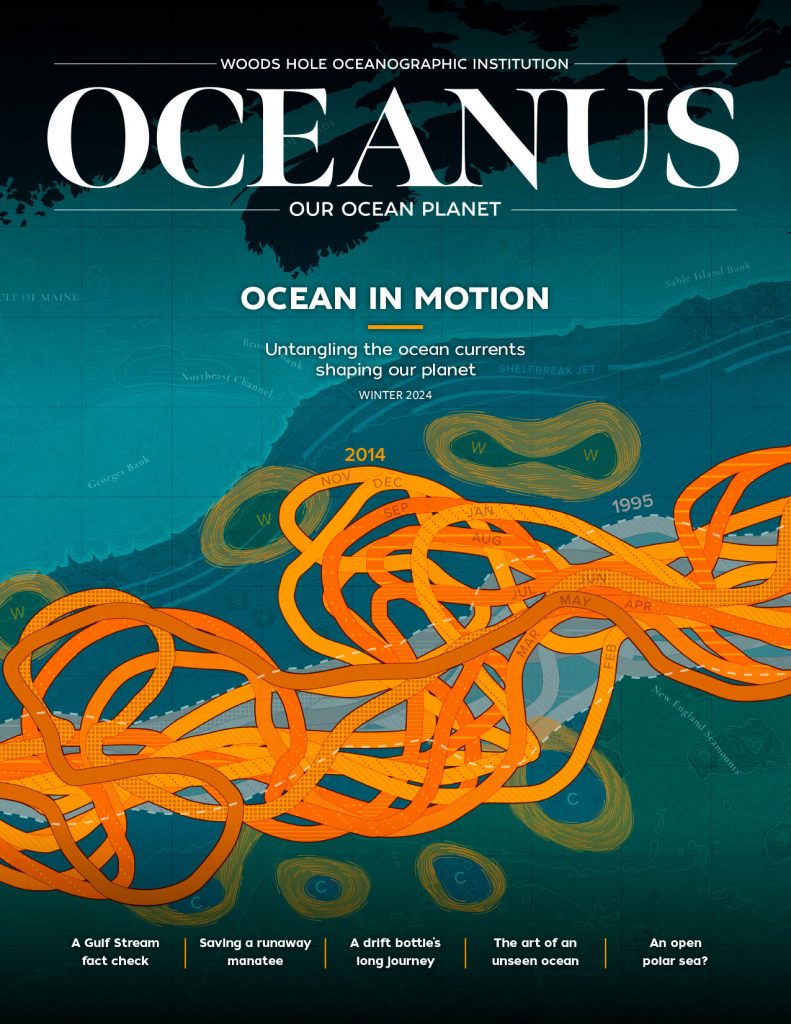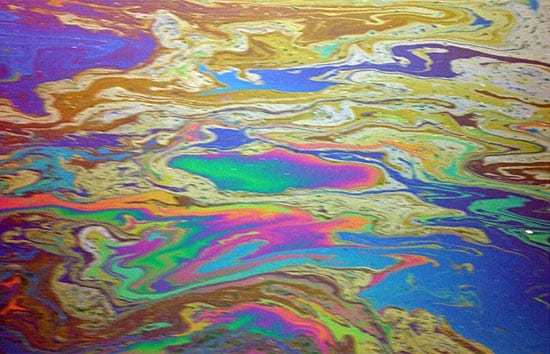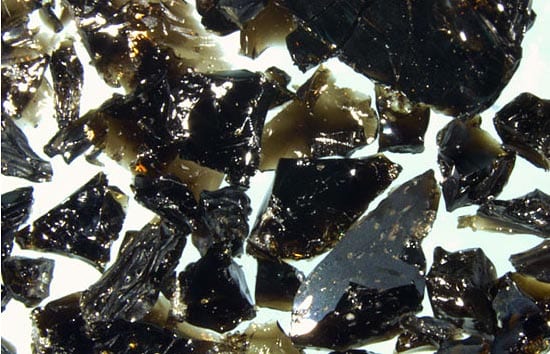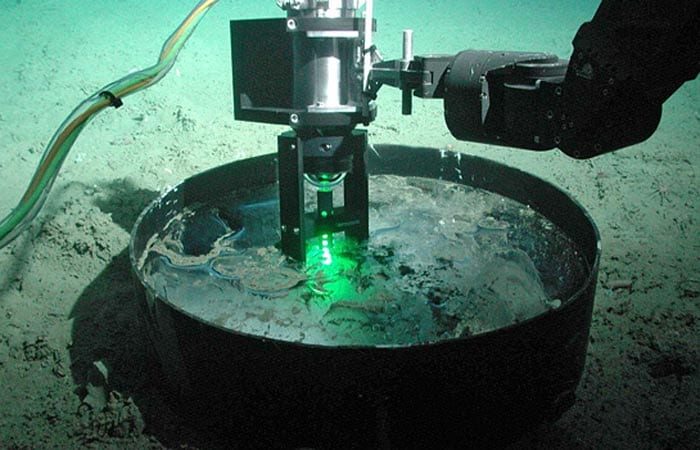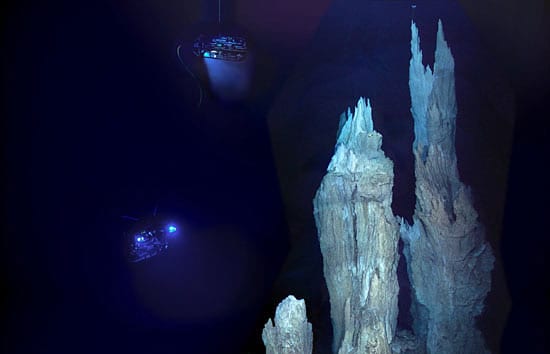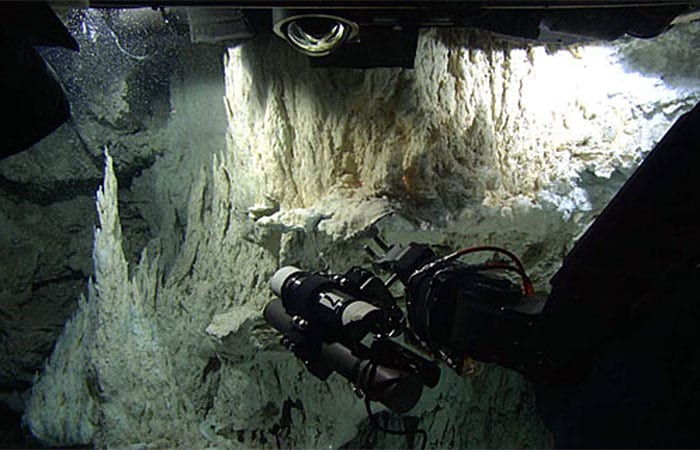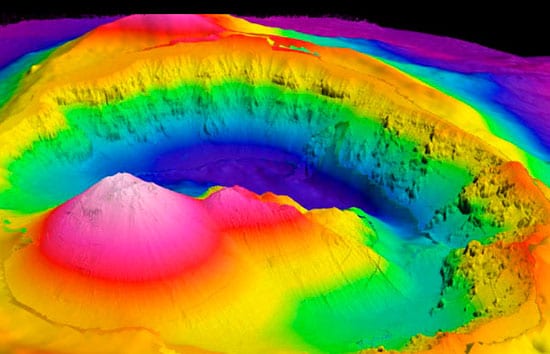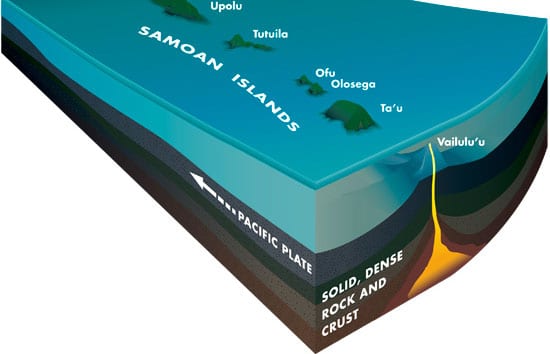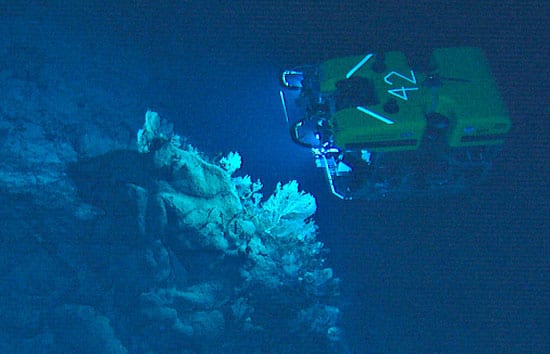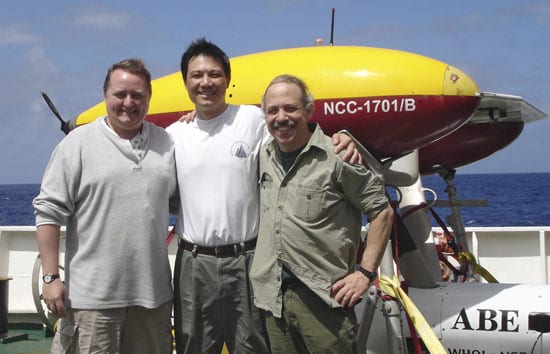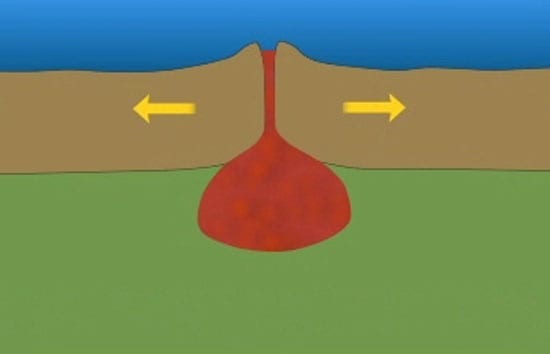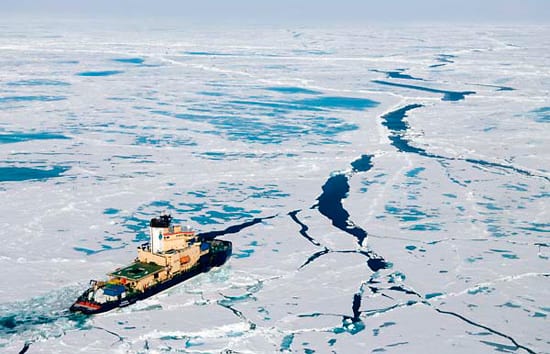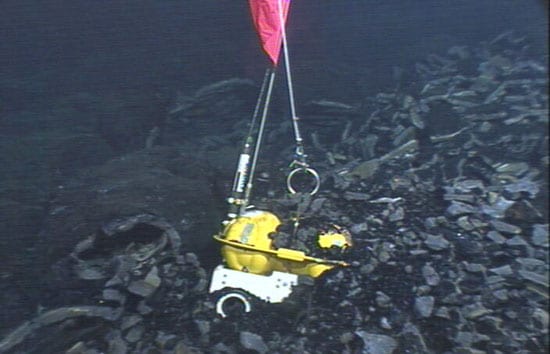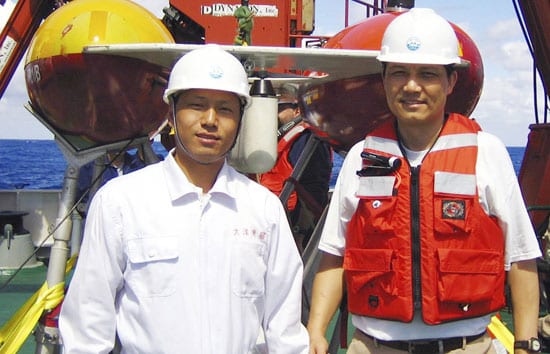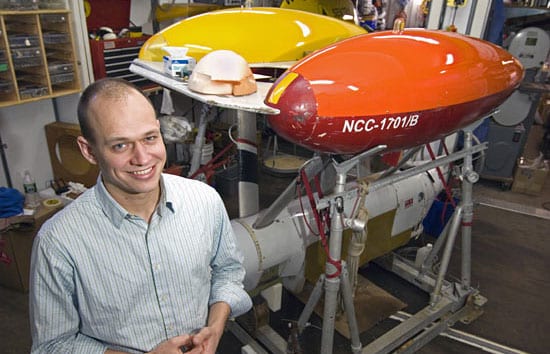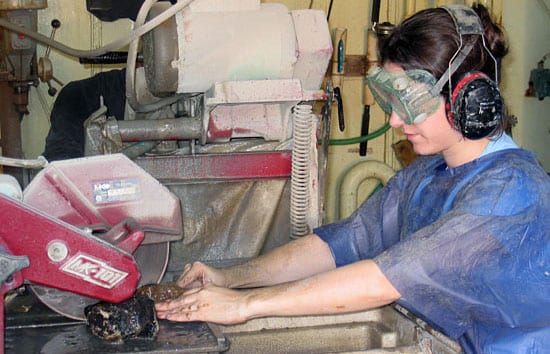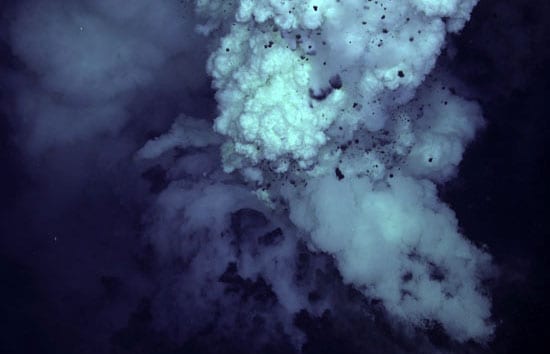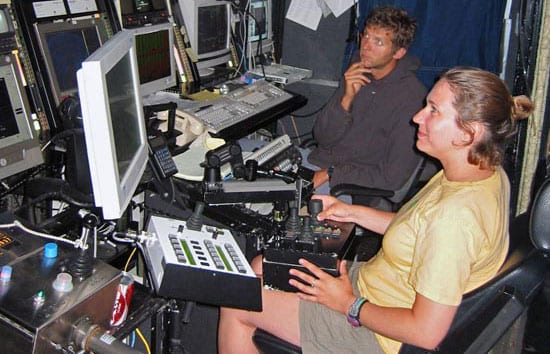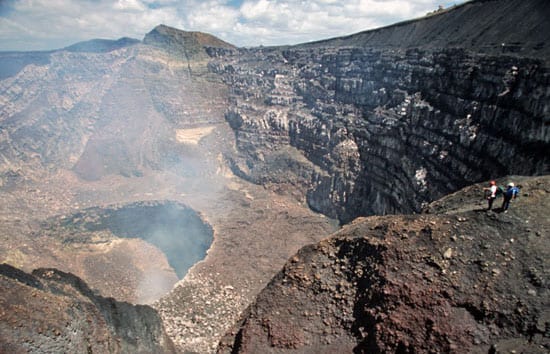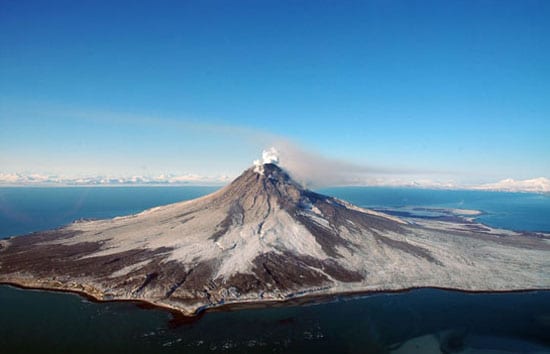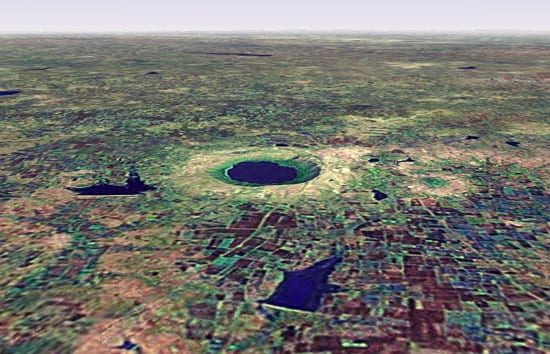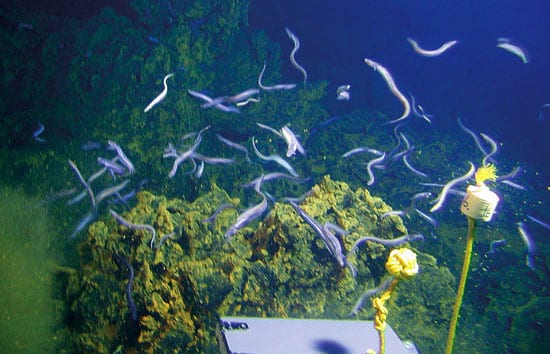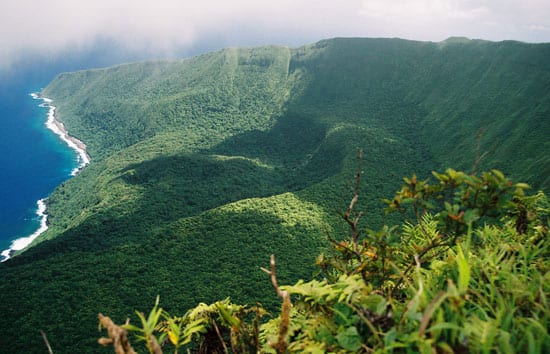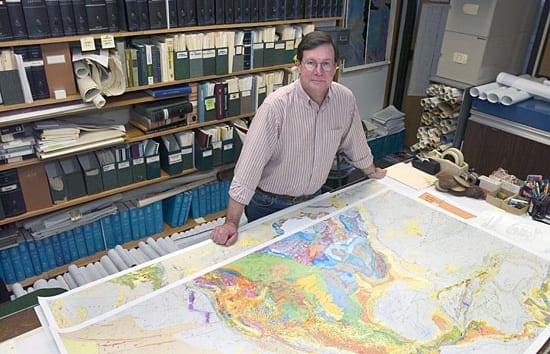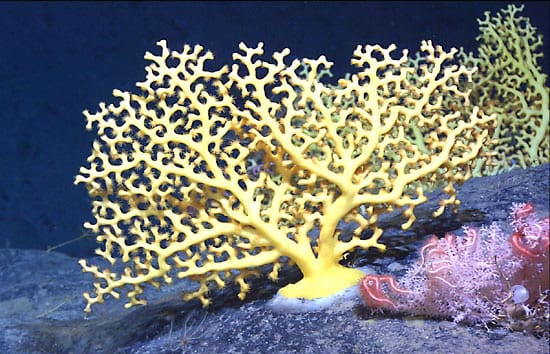Oceanus Online Archive
While Oil Gently Seeps from the Seafloor
I investigate what happens to oil spilled into the ocean—with an eye toward finding better ways to “engineer” cleanups. But the brass ring has always hung out of my reach.…
Read MoreDeeply Submerged Volcanoes Blow Their Tops
A research team led by Woods Hole Oceanographic Institution (WHOI) has uncovered evidence of explosive volcanic eruptions on the Arctic Ocean seafloor almost 2.5 miles deep. Scientists did not think…
Read MoreCan’t Bring Deep-sea Samples Up? Send a Lab Down.
Much of what is surprising about the deep ocean results from the extraordinary conditions found there—frigid temperatures, crushing pressure, unusual chemical and biological processes, and the complete absence of sunlight.…
Read MoreSome Things New Under the Sea
New microbe species discovered In the quest to explore the remarkable diversity of microbial life on Earth, a German-American team of scientists has discovered seafloor bacteria that can “eat” natural…
Read MoreLost City Pumps Life-essential Chemicals at Rates Unseen at Typical Black Smokers
Hydrocarbons—molecules critical to life—are routinely generated by the simple interaction of seawater with the rocks under the Lost City hydrothermal vent field in the Atlantic Ocean, according to research led…
Read MoreRobot Paints Stunning Map of Deep-sea Volcano
Painting with sonar, each brushstroke a “ping” of sound reflected off the seafloor, the robotic underwater vehicle called ABE created a masterpiece of a landscape—one that is submerged about a…
Read MorePlumbing the Plume That Created Samoa
Matthew Jackson began his journey to the center of the Earth on lonely gravel roads in Montana. Uninterested in motorcycles and horses, and miles from neighbors and friends, Jackson roamed…
Read MoreCoral Catastrophe on the Corner Rise Seamounts
A research team has found that deep-sea coral communities that provide lush habitats for fish and other marine life were extensively damaged, mostly likely by deep-sea fishing trawlers, atop two…
Read MoreBuilding International Bridges to Explore Ridges
In January 2007, WHOI scientists Jian Lin, who grew up in China, and Chris German, who grew up in England, became the new chair and co-chair of an international organization…
Read MoreNew Wrinkles in the Fabric of the Seafloor
Deborah Smith first heard the strange rumbling from the seafloor in 2001 and was eager to get to the bottom of it. The ocean commotion was detected by underwater hydrophones…
Read MoreSummer Under Arctic Ice
This month, an international team of scientists and engineers are exploring the seafloor of the Arctic Ocean while cruising aboard the Swedish icebreaker Oden. The science team is sending three…
Read MoreRescue Mission on the Seafloor
The two earthquake-monitoring instruments—each the size and weight of a small refrigerator—were glued to the ocean bottom by erupting lava that had flowed and hardened around them. If scientists could…
Read MoreA Ridge Too Slow?
Ever since scientists first discovered vents gushing hot, mineral-rich fluids from the seafloor in the Pacific Ocean 30 years ago, they have found them in various places along the Mid-Ocean…
Read MoreYoung Pup Teaches an Old Robot New Tricks
Mike Jakuba was still a year away from being born when scientists found vents on the seafloor that gushed hot, mineral-rich fluids and were surrounded by bizarre life forms thriving…
Read MoreA Rare Glimpse Into the Ocean’s Crust
About one and a half million years ago, a great hidden piece of the ocean’s crust uplifted and rotated, giving Clare Williams a window and a time machine into Earth’s…
Read MoreJason Versus the Volcano
Through the camera eyes of the undersea vehicle Jason, scientists were investigating a quietly bubbling pit on the side of a large volcano on the seafloor south of Japan in…
Read MoreA Laser Light in the Ocean Depths
Graduate student Anna Michel is adapting laser technology to the murky fluid environment and crushing pressures at depths of 11,000 feet. The goal is to develop an instrument that can directly measure the many elements spewing from hydrothermal vents just as they emerge from Earth?s crust.
Read MoreInto the ‘Mouth of Hell’
Ken Sims peers over the rim of Masaya Volcano and looks 2,000 feet (600 meters) down into the smoking crater lined with rows of jagged rocks that jut up like…
Read MoreTo Catch an Erupting Volcano
Augustine, an island volcano 170 miles southwest of Anchorage, Alaska, began erupting in December 2005. By February, Uri ten Brink of the U.S. Geological Survey (USGS) in Woods Hole had…
Read MoreOne of the Greatest Volcanic Shows on Earth
About 50,000 years ago, a huge meteorite smacked into our planet, gouging a hole more than a mile wide and 790 feet deep in India. Of the roughly 150 known…
Read MoreNafanua, Eel City, and the Crater of Death
WHOI geochemist Stan Hart and colleagues have discovered a fast-growing volcano, dubbed Nafanua, inside the crater of Vailulu’u, a 14-300-foot active volcano that should begin the next island in the Samoan chain. They also found a novel hydrothermal community, which they named “Eel City,” and a lifeless zone in the caldera, which they call the “Crater of Death.”
Read MoreRambling Atop an Active Volcano to Detect Telltale Rumbling Within It
With machete in hand and 60 pounds of satellite receiver and tripod on his back, Jeff Standish looked up into the lush tropical brush that covered the volcano, up a steep escarpment, and up again to the summit 3,000 feet above sea level. Then he turned to Rhea Workman, a graduate student in the WHOI/MIT Joint Program, and said, “We’re going up where?”
Read MoreA “Thinking Map” of North America
For geologist Brian Tucholke, creating a new Geologic Map of North America was a 23-year adventure. Published in February by the Geological Society of America (GSA), the map illustrates the geology of approximately 15 percent of Earth?s surface and spans an area from the North Pole to Venezuela, and from Ireland to Siberia.
Read MoreCoral Gardens in the Dark Depths
The words “coral reefs” conjure up images of a tropical paradise: shallow, warm, aquamarine waters, bright sunlight, white coral sand, and colorful, darting fish. But corals also live deep in the sea, in regions where the sun doesn’t penetrate and water temperatures remain just above freezing.
Read More